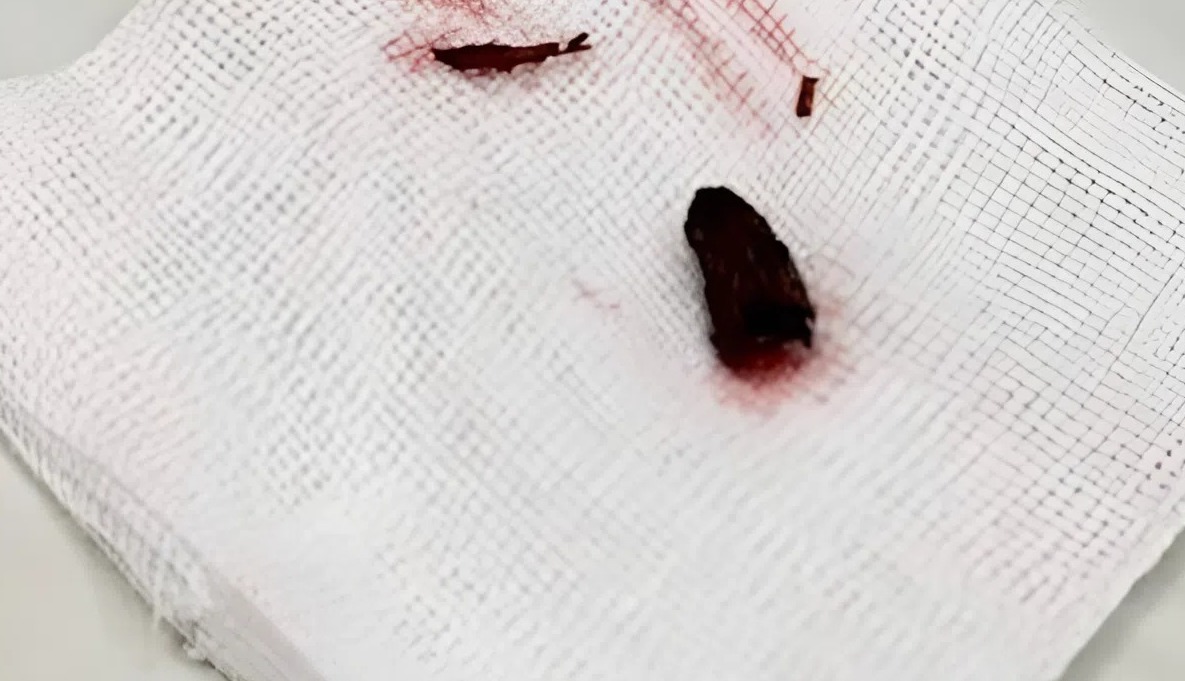On 6/7, Dr. Nguyen Thi Ngoc Anh, acting head of the Ophthalmology Department at Children's Hospital 1, reported that the young patient presented with a severe infection and a foreign object lodged in his eye socket. The injury had damaged the superior branch of the 3rd cranial nerve, causing outward deviation of the eye and drooping eyelid, with a risk of vision loss. A CT scan revealed a large abscess around the boy's right eye socket, suggesting a foreign object embedded deep within the soft tissue.
The surgical team drained pus from the boy's eyelid area and successfully removed a wood splinter approximately 1.5 cm long lodged deep inside. This splinter was the source of the spreading infection and abscess formation. Post-surgery, the infection in the eye socket significantly reduced, and the outward eye deviation and eyelid drooping also improved.
 |
The wooden splinter removed from the boy's eye socket. Photo: Hospital provided |
The wooden splinter removed from the boy's eye socket. Photo: Hospital provided
According to Dr. Ngoc Anh, outdoor accidents tend to increase during the summer as children are out of school and have more free time to play. Eye injuries are among the most dangerous emergencies but can be easily overlooked if not treated correctly and promptly. Incorrect handling, leaving foreign objects in the eye, or delayed treatment can lead to abscesses, orbital cellulitis, soft tissue necrosis, and even permanent vision loss. Life-threatening infections can also spread.
"Never attempt to remove a foreign object from the eye at home or seek treatment at a facility without ophthalmology specialists," Dr. Anh warned. Children with eye injuries should be taken to a hospital with ophthalmologists for proper examination and monitoring, especially if there are signs such as prolonged swelling, pus, severe pain, or blurred vision.
Le Phuong












